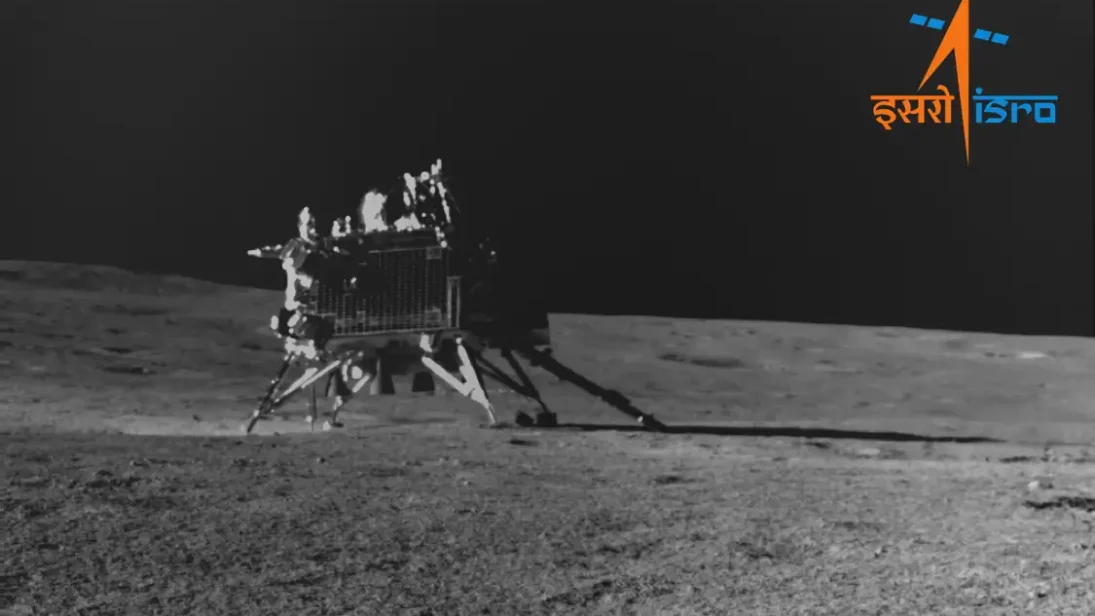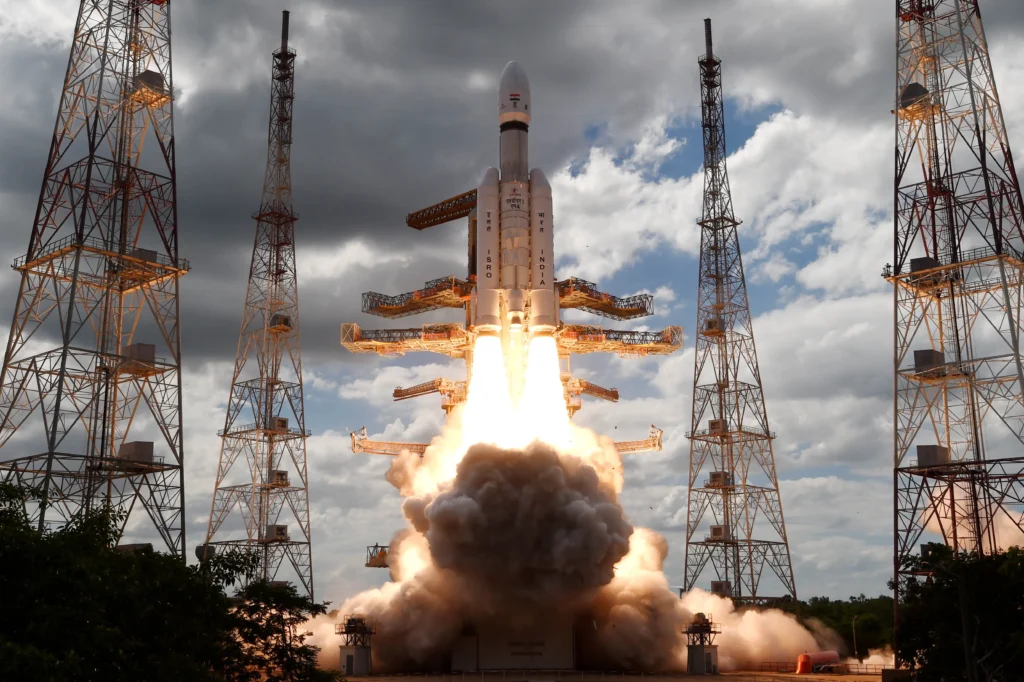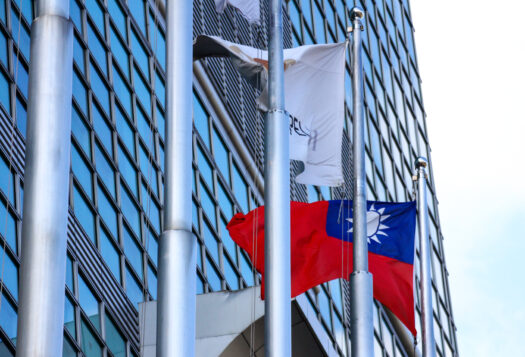
On August 23, India became the fourth country to successfully achieve a soft landing on the Moon, joining the United States, Russia, and China. The Indian Space Research Organization (ISRO) Vikram lander set off on the Launch Vehicle Mark-3 (LVM3) from the Satish Dhawan Space Center on July 14 as part of the Chandrayaan-3 (CH-3) mission to explore the Moon. After over a month’s journey, the lander was the first ever to land near the South Pole of the Moon, gripping global attention and making history.
The Vikram lander carried Pragyan, a rover, which rolled onto the lunar surface to complete its research objectives and relay videos of its environment to Earth. After completing its assignments, the solar powered rover entered a state of dormancy as the 14-day lunar night began. While it is possible that the rover wakes after the frigid night, the CH-3 mission is already both a scientific and soft power victory for India. With millions of eyes around the world watching the Vikram lander touch down in a relatively unexplored region of the Moon, this moment seems to mark the dawn of the lunar renaissance in the public realm.
The Indian Pursuit of Outer Space
Given that the space domain is an arena for geopolitical influence, India’s pursuit of outer space is driven by its science and technology goals as well as its desire to enhance its sovereign power. When Prime Minister Narendra Modi addressed India and the rest of the world after the Vikram lander touched down on the Moon, he declared that “the world is witnessing India’s G20 presidency.” Modi said that the CH-3 landing demonstrates that developing countries can achieve such feats, aligned with India’s hopes to project power and place itself as the leader of the global South.
While the first Moon landing by the United States was over 50 years ago, the CH-3 mission was especially impressive as it was the first to achieve a soft landing near the tricky terrain of the South Pole of the Moon. This geography is valuable as it has signs of water, specifically water ice, that can be broken down into hydrogen and oxygen and hypothetically used as rocket fuel.
The presence of water differentiates ongoing lunar exploration from the Space Race in the 1960s as space activities today have a unique economic calculus alongside the pursuit for national prestige and geopolitical advantage. Given the high cost of fueling space missions, the Moon could theoretically become a refueling point for satellites and rockets by reducing costs and extending mission lifespans. Additionally, studying the Moon’s pristine water could help us gain an understanding of the origins of the Earth and the Moon, as well as how life arose on our planet. The South Pole region also has peaks that are in constant or near-constant sunlight, making it a desirable geography for solar powered activities on the Moon. Unsurprisingly, other spacefaring nations, like the United States and China, have ongoing or upcoming missions to explore the South Pole of the Moon.
A Win for the U.S.-India Partnership
Widespread congratulations were offered by key officials including Vice President Kamala Harris and NASA Administrator Bill Nelson, with an emphasis on the future of the two countries’ partnership. The United States, alongside the European Space Agency and the Swedish Space Corporation, even supported the Chandrayaan-3 mission. The Vikram lander carried NASA’s Laser Retroreflector Array, an auxiliary instrument that helps determine the location of the lander. India’s lunar landing contributes to existing and increasing cooperation with the United States in space, exemplified by the Joint Statement detailing the growing space partnership from the NASA-ISRO Synthetic Aperture Radar mission (NISAR), to the U.S.-India Civil Space and Commercial Space Working Groups, and the joint human spaceflight mission to the International Space Station in 2024.
As an active, spacefaring nation, India signing the Artemis Accords strengthened principles championed by the U.S. for space, especially regarding the use of lunar resources.
Additionally, India’s accession to the Artemis Accords certainly came at the right time for Washington. Championed by the United States, the Artemis Accords is a non-binding arrangement to guide civil space exploration and human space activities on the Moon, Mars, and beyond. The Accords go together with NASA’s Artemis Mission to return to the Moon and pave the way for human missions to Mars.
While New Delhi had proven hesitant to join the Accords in the past, India’s signing of the Artemis Accords signaled a departure from its traditional preference of internationally negotiated, legally-binding instruments for space activities. As an active, spacefaring nation, India signing the Artemis Accords strengthened principles championed by the U.S. for space, especially regarding the use of lunar resources. As one of 4 countries to have ever landed on the Moon, India could further contribute to the normative strength of the Accords through action and advocacy.

Implications for China?
While the CH-3 mission is an indisputable technological feat, the geopolitical impetus and impact in relation to China must not be overstated. Analysts in New Delhi and abroad have explained the relation between India’s space program and competition with China. With China’s growing space capabilities alongside deteriorating bilateral relations on Earth with India, India has be induced to grow its space capabilities to not fall too far behind.
Since China has traditionally viewed India as ‘below its league’ in terms of military power, some hope that the Moon landing might alter their perspective of categorical technological superiority and approach India with more respect. However, the CH-3 mission is unlikely to substantially shift China’s perception of India given the considerable gaps in capabilities between the two countries. In 2022, China recorded 12 times more launches reaching orbit and put 25 times more mass (weight of payloads) into orbit than India. China also completed the construction of Tiangong, a three-module, permanently crewed space station in low Earth orbit (LEO).
While the CH-3 landing might not alter China’s perception of Indian space capabilities, it is possible that India’s landing coupled with Russia’s failure to land its Luna-25 probe on the Moon might amplify Chinese concerns over the strength of their partnership with Russia for their International Lunar Research Station. Outer space has been drawn into U.S.-China great power competition between the U.S.-led Artemis block and the Sino-Russian bloc. With the recent inclusion of India, the comparative strength of the Artemis Accords (with 28 partners and growing) could worry China given the increasing strength of the U.S.-led order in space.
However, China’s concern with the Artemis bloc must not be overestimated as there are no stark demarcations between the geopolitical ‘blocs’. For example, countries including Saudi Arabia, UAE, and even the European Union coordinate space activities with both the United States and China. India also maintains some ambivalence through partnerships with nations that are not aligned with the U.S. Artemis bloc. At the 15th BRICS summit between India, China, Brazil, Modi proposed that BRICS form a space exploration consortium, which could result in lunar collaboration between the two countries.
Conclusion
Vikram Sarabhai famously said that if India was to play a meaningful role on the global stage, it must be “second to none in the application of advanced technologies to the real problems of man and society.” Today, if India wants to play that ‘meaningful role’ in line with Modi’s remarks after the success of the CH-3 mission and goals of its G20 presidency, it must supplement its technological feats by contributing actively to space policy and forging innovative partnerships in outer space.
Leveraging its position as a Moon landing country, India should push for the kind of internationally negotiated, legally binding instruments for space activities that it has traditionally preferred. India must contribute to the framing of outer space laws on issues including space resource management, space debris mitigation, and the militarization of space to ensure that laws serve the interests of future space-faring countries alongside existing space actors.
If India wants to play that ‘meaningful role’ in line with Modi’s remarks after the success of the CH-3 mission and goals of its G20 presidency, it must supplement its technological feats by contributing actively to space policy and forging innovative partnerships in outer space.
To emerge as a leader of developing countries, India must work with nations across the international spectrum to strengthen existing relations and forge new partners in outer space. Importantly, India must actively partner with countries hoping to develop indigenous space programs beyond MOUs, through assistance in building capabilities especially for civil space activities that derive benefits of outer space for Earth. The ‘democratization’ of access to space could support the development equitable and sustainable space laws. While a signatory of the Artemis Accords, it India should leverage its position as a Moon landing nation to pursue the independent goals and policy priorities of its space program while balancing its relationships with the United States and China.
The success of CH-3 serves as a testament to the hard work of ISRO’s scientists and the long-term commitment to scientific excellence of its early leaders, which ultimately aids in India’s goal of increasing its own sovereign power. India’s space strategy must continue with a far-sighted approach for space activities and must be applied to space policy and partnerships to realize its scientific, geopolitical, and economic imperatives.
Also Read: Strategic Ambiguity in Indian Outer Space Policy.
***
Click here to read this article in Urdu.
Image 1: Chandrayaan-3 via ISRO.
Image 2: LVM3 M4 Mission Post-Launch via ISRO.


